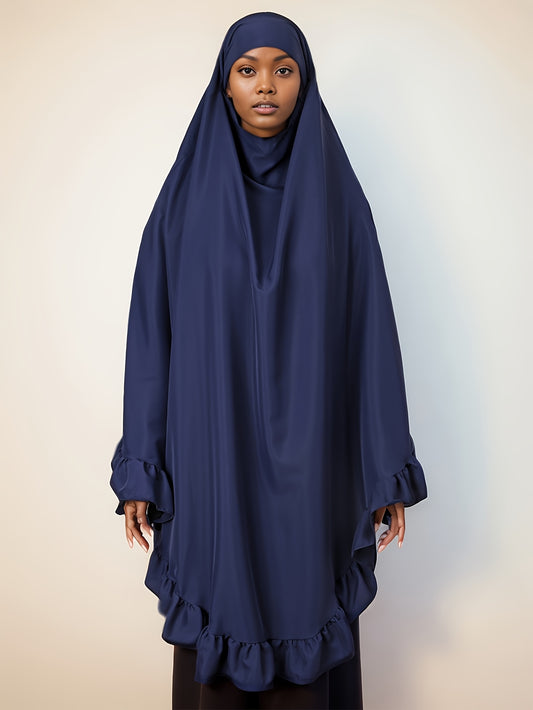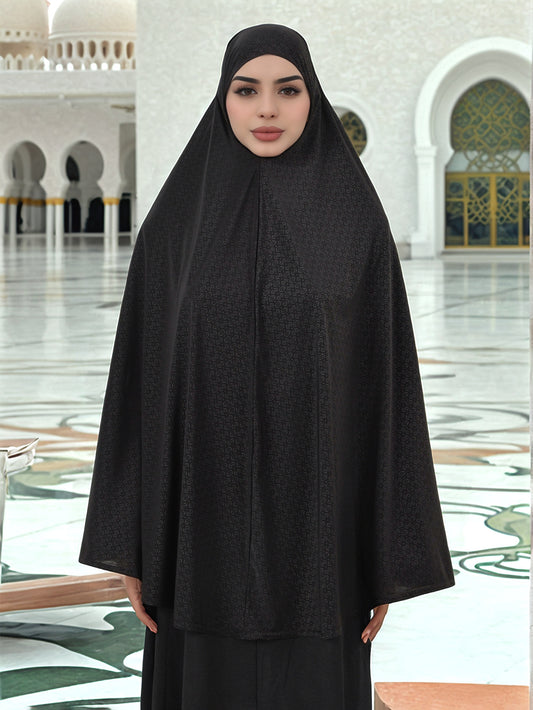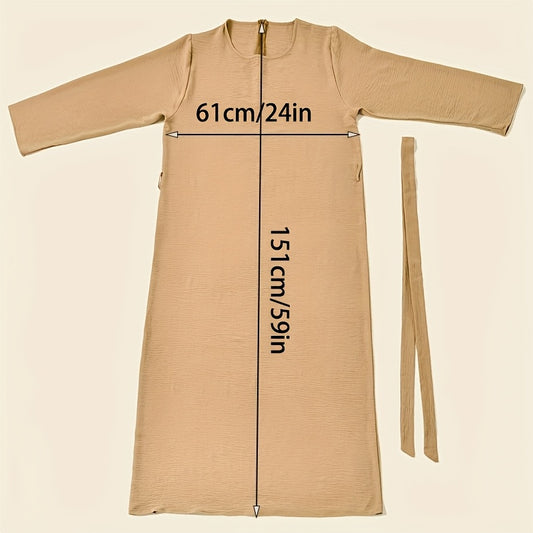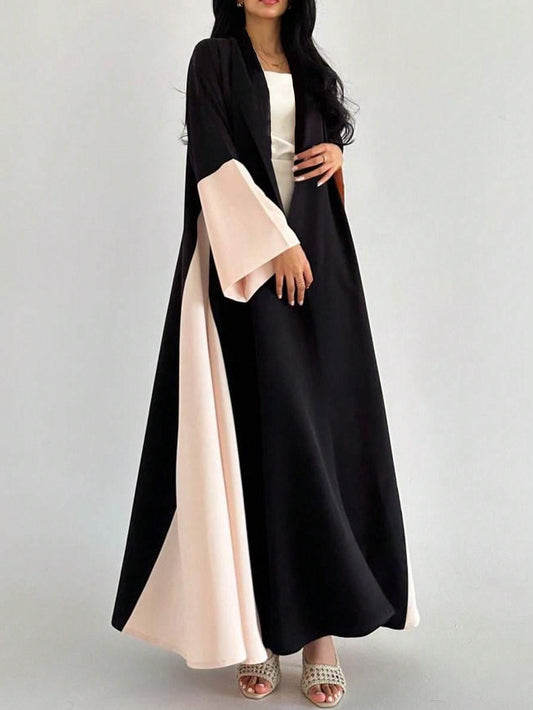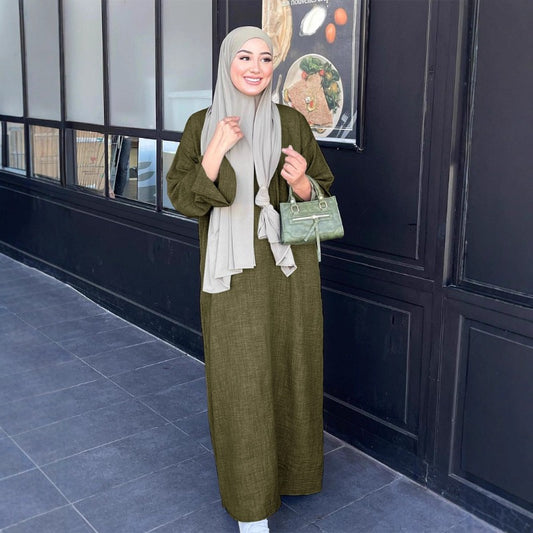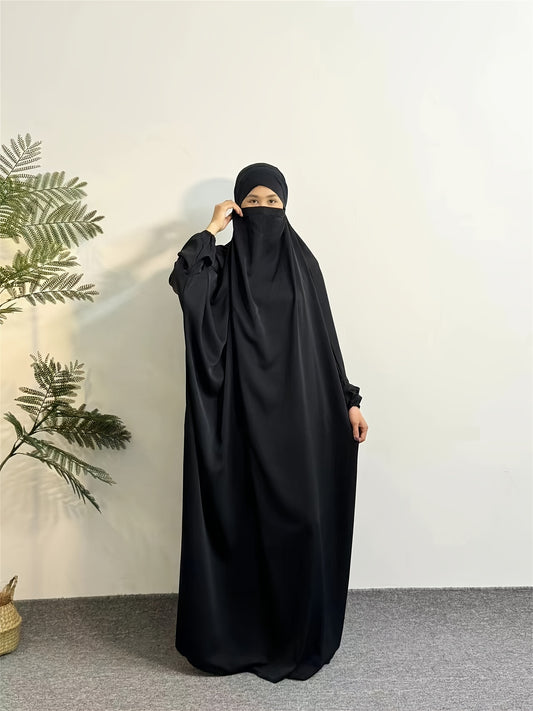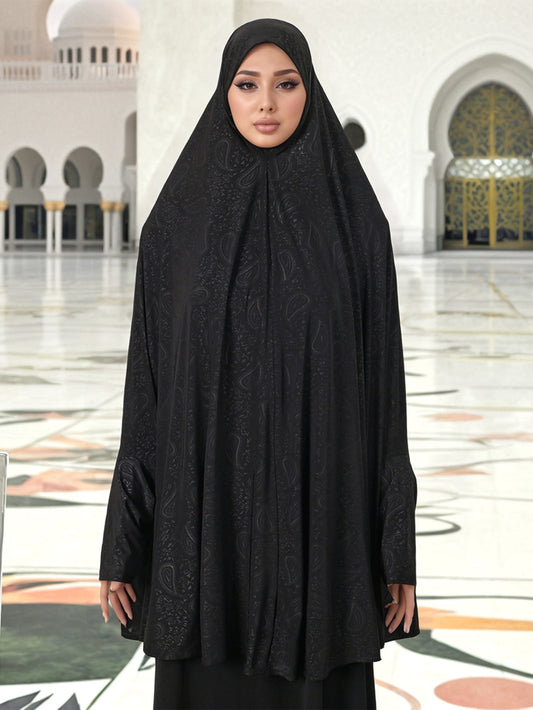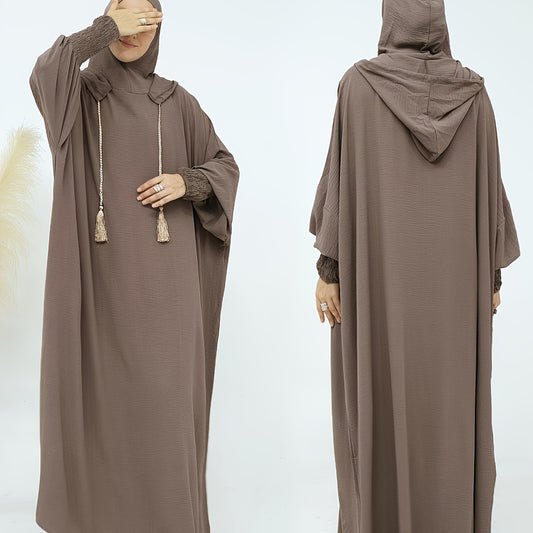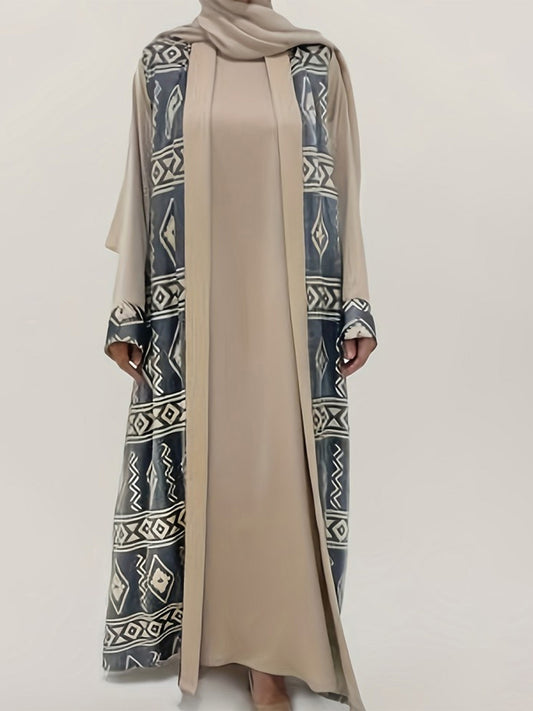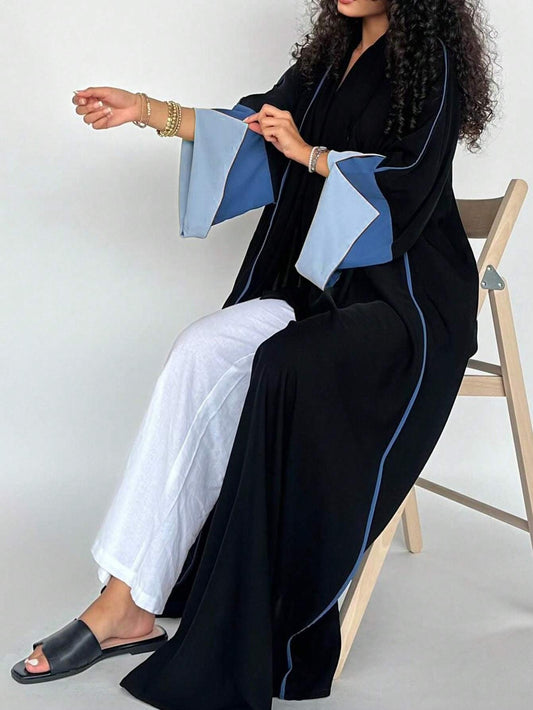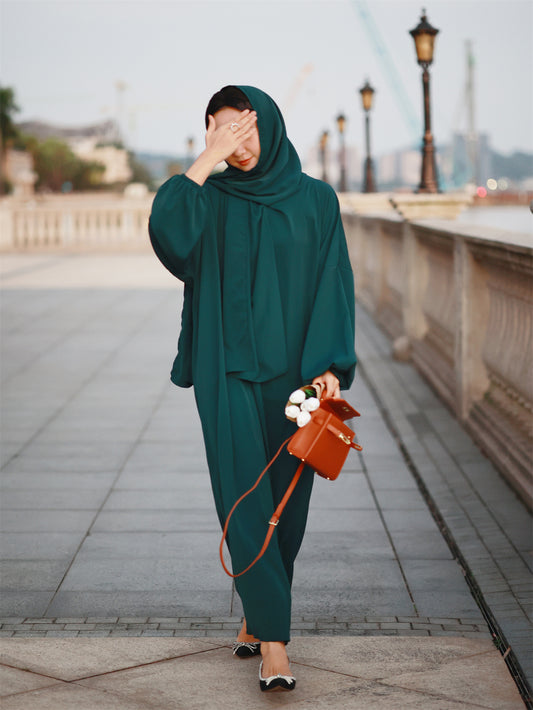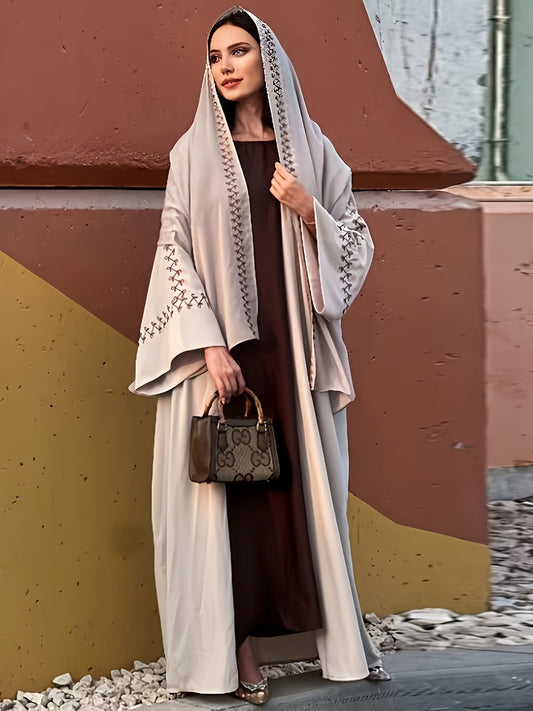About Abaya Burkha
Abaya Burkha – Tradition, Modesty, And Contemporary Fashion
The abaya and burkha are garments that hold deep cultural, spiritual, and social significance. Worn by women across the Middle East, South Asia, and increasingly in Western societies, these pieces of attire represent more than just fabric. They are an embodiment of modesty, identity, and dignity while also evolving into versatile elements of modern fashion. With global fashion embracing diversity, abayas and burkhas are no longer viewed only as traditional attire but as adaptable clothing that merges faith, elegance, and personal style.
History And Origins
The roots of the abaya and burkha stretch back centuries. Historically, both were designed to provide modest coverage, aligning with Islamic values of humility and privacy. The abaya originated primarily in the Arabian Peninsula, traditionally made of black fabric draped loosely over the body. The burkha, more common in South Asia, particularly Afghanistan and Pakistan, included face veils and provided complete coverage. Over the years, both garments have carried symbolism, whether tied to cultural heritage, religious devotion, or social identity.
The Evolution Of Design
Modern abayas and burkhas differ significantly from earlier versions. What once was a simple cloak has become a fashion-forward garment with endless variations. Designers now create abayas in luxurious fabrics like chiffon, silk, crepe, and satin. They come embellished with embroidery, beadwork, lace, and even sequins. The burkha has also adapted, with lighter fabrics and contemporary tailoring for comfort and breathability. In global fashion capitals, abayas appear on runways as statement pieces, showing the versatility of modest wear in high-end design.
Symbolism Of Modesty
At the heart of these garments lies the principle of modesty. In Islamic tradition, clothing is a reflection of humility and self-respect. For many women, the abaya or burkha offers both religious alignment and a sense of personal empowerment. Instead of being viewed as limiting, many women see these garments as liberating—allowing them to be judged for their character and intellect rather than physical appearance.
Varieties Of Abayas
There are many types of abayas suited to different lifestyles and preferences.
-
Classic Black Abaya: Timeless, simple, and elegant.
-
Embroidered Abaya: Detailed with hand or machine embroidery for artistic appeal.
-
Kimono-Style Abaya: Inspired by Japanese design, open-front and flowy.
-
Open Abaya: Worn over clothing, often styled with belts.
-
Luxury Abaya: Designed for events, often with crystals, beads, and premium fabrics.
-
Casual Abaya: Lightweight and practical for daily wear.
Each type reflects a balance between tradition and modern styling, allowing women to adapt modest wear to their individual needs.
Burkha Styles
The burkha has multiple variations as well.
-
Full Burkha With Niqab: Covers the entire body and face with a small opening for the eyes.
-
Hijab-Style Burkha: Combines a face covering with layered draping.
-
Modern Burkha With Panels: Features lighter materials and flowing panels for comfort.
-
Regional Variations: In some regions, burkhas are designed with colorful fabrics rather than plain black.
These variations show how cultural practices influence design while maintaining the essence of modesty.
Global Acceptance And Representation
In recent decades, abayas and burkhas have transcended geographic borders. Muslim women in Europe, North America, and Australia wear them proudly while balancing cultural identity and modern fashion. Designers from Paris, London, and New York increasingly showcase modest wear in their collections, proving that elegance does not require revealing clothing. Social media influencers have also normalized abayas as fashionable attire, inspiring younger generations to embrace their heritage with pride.
Fashion Meets Modesty
Modern abayas and burkhas blur the line between tradition and high fashion. They are styled with handbags, jewelry, belts, and even luxury shoes. Colors now range from traditional black to pastel tones, earthy neutrals, jewel shades, and metallics. This shift reflects the demand for choice and individuality, while still respecting modest dressing principles. For weddings and Eid celebrations, women choose embellished abayas that sparkle with embroidery and stones, merging cultural significance with celebratory style.
The Role Of Fabric
Fabric selection is crucial in abayas and burkhas. Lightweight fabrics like chiffon and georgette are ideal for warmer climates, while heavier materials like wool blends suit colder regions. Satin and silk provide luxury finishes, perfect for events. Breathable cotton ensures comfort for daily wear. The choice of fabric not only determines appearance but also comfort and practicality.
Abayas And Modern Professionalism
In professional settings, abayas are increasingly being tailored to suit working women. Sleek, structured designs in neutral colors provide a modest yet corporate look. Many abayas are now tailored with pockets, belts, or layered panels that combine practicality with elegance. They enable women to maintain cultural modesty while navigating the global workplace.
The Emotional Connection
For many women, wearing the abaya or burkha goes beyond fashion. It creates an emotional connection to faith, family traditions, and community. Some feel empowered knowing their clothing represents both identity and spiritual alignment. For others, these garments provide comfort, safety, and confidence in expressing themselves authentically.
Fabulive’s Place In Modest Fashion
While best known for Fabulive Hair Extensions, the brand also celebrates inclusivity by offering abayas and burkhas crafted with precision and quality. Just as extensions empower women through beauty and self-expression, abayas empower them through modesty and identity. The commitment to quality, ethical sourcing, and variety makes Fabulive a trusted name in modest fashion as well.
Myths And Misconceptions
Despite their global presence, misconceptions persist. Some assume abayas or burkhas limit creativity. In reality, designers continue to innovate, offering countless variations. Others mistakenly believe they are uncomfortable, but modern fabrics ensure breathability and ease. By challenging stereotypes, modest fashion continues to reshape perceptions globally.
Seasonal Abaya Styling
Abayas adapt beautifully to seasons:
-
Spring: Floral-embroidered abayas reflect renewal and femininity.
-
Summer: Lightweight, pastel-colored abayas for breathable comfort.
-
Autumn: Earth-toned fabrics with subtle details suit seasonal tones.
-
Winter: Heavier abayas in darker shades, often layered with scarves.
These seasonal adaptations make abayas versatile wardrobe staples year-round.
Occasions For Abayas And Burkhas
Different events inspire unique styling choices. For Eid celebrations, embellished and luxury abayas dominate. Weddings often feature silk or satin designs with crystals. Everyday use requires simple, breathable abayas for practicality. For formal events or business settings, tailored cuts in neutral palettes work best. This diversity ensures every woman can find an abaya that suits her lifestyle.
Cultural Exchange
Abayas and burkhas are increasingly seen as part of cultural exchange. Non-Muslim women sometimes wear them for cultural appreciation, while global fashion houses incorporate modest designs inspired by them. This has created dialogues about cultural respect, diversity, and fashion inclusivity.
Sustainability In Modest Fashion
Just as the beauty industry is embracing sustainability, so is modest fashion. Designers now focus on eco-friendly fabrics and ethical production. The rise of slow fashion has also influenced abaya design, emphasizing timeless pieces rather than fast-changing trends. Customers increasingly seek garments that last, respecting both quality and environment.
The Future Of Abayas And Burkhas
As modest fashion becomes more mainstream, the future promises continued innovation. Expect more diversity in colors, fabrics, and cuts, with increased representation in international fashion weeks. Technology may also play a role, with wrinkle-resistant fabrics, adaptive sizing, and sustainable fibers enhancing practicality. The future lies in maintaining tradition while embracing change.
Customer Reviews
-
“This abaya is elegant yet so comfortable. I wore it to work and received endless compliments.” – Layla, USA ⭐⭐⭐⭐⭐
-
“Beautiful quality and stitching. The fabric is lightweight, which makes it perfect for summer.” – Amina, UK ⭐⭐⭐⭐
-
“I ordered a luxury abaya for Eid, and it exceeded my expectations. Truly stunning.” – Fatima, Canada ⭐⭐⭐⭐⭐
-
“The burkha is practical but also stylish. It makes me feel both confident and modest.” – Hana, Australia ⭐⭐⭐⭐⭐
-
“Delivery was quick, and the packaging felt premium. The embroidery is delicate and detailed.” – Zarah, Germany ⭐⭐⭐⭐
-
“I purchased one for a family wedding, and everyone asked where I bought it. Gorgeous design.” – Noor, France ⭐⭐⭐⭐⭐
-
“Comfortable for everyday wear. The cut allows easy movement without sacrificing elegance.” – Samira, UAE ⭐⭐⭐⭐⭐
-
“I loved the variety of designs. It feels good to see modest fashion being given so much attention.” – Mariam, Italy ⭐⭐⭐⭐
-
“Stylish and modern. It pairs beautifully with accessories like belts and handbags.” – Yasmeen, Saudi Arabia ⭐⭐⭐⭐⭐
-
“Excellent craftsmanship. I’ve worn mine multiple times, and it still looks brand new.” – Sofia, Switzerland ⭐⭐⭐⭐⭐


